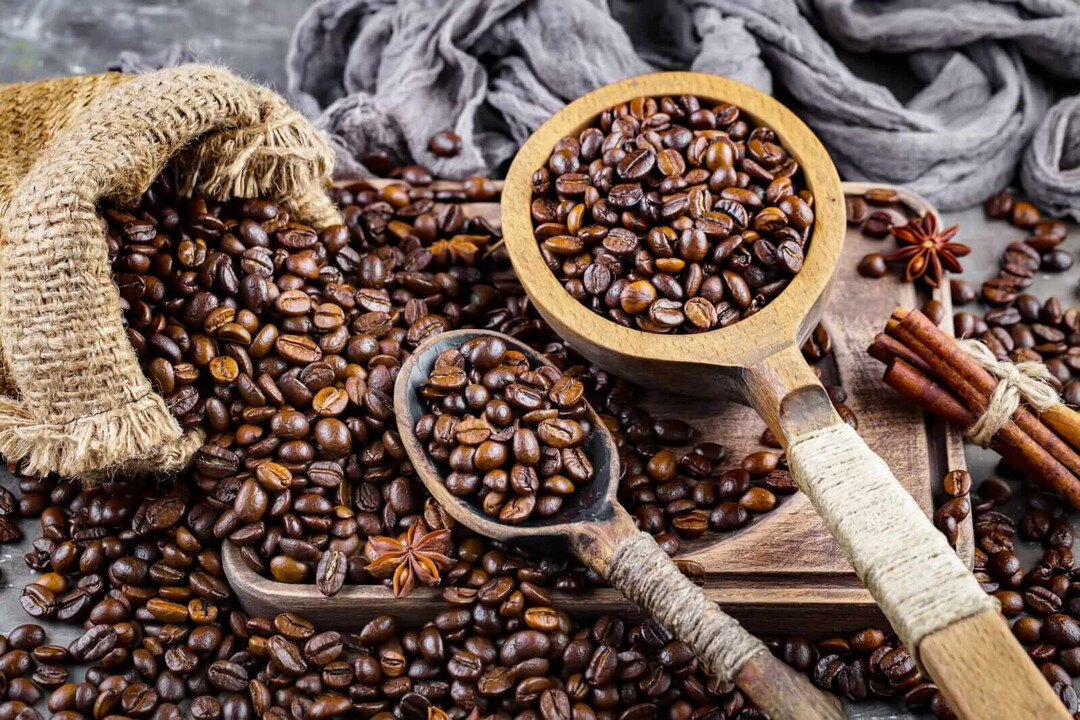
SEOUL, SOUTH KOREA - Coffee futures experienced a significant downturn today, adding to losses from earlier in the week, as forecasts of much-needed rainfall in Brazil alleviated concerns about dry weather impacting crop yields. May arabica coffee (KCK25) on the exchange plummeted by $11.90 or 3.04%, reaching a one-month low for the nearest futures contract. Similarly, May ICE robusta coffee (RMK25) declined by $109 or 2.00%, hitting a 2-1/4 month low.
The downward pressure on prices is largely attributed to updated weather forecasts for Brazil, the world's largest producer of arabica beans. Meteorologist Climatempo has predicted widespread showers across Brazil's key coffee-growing regions later this week. This positive shift in the weather outlook has triggered long liquidation, as market participants reduce their bullish positions on coffee futures.
This week began with a contrasting trend, as both arabica and robusta prices initially moved higher. Arabica futures reached a three-week peak on Wednesday due to earlier anxieties surrounding weather conditions in both Brazil and Vietnam. Cooxupe, Brazil's largest arabica coffee cooperative, had previously warned that high temperatures and below-average rainfall in the past month would negatively impact this year's coffee yields.
Concerns about dry conditions in Vietnam, the top producer of robusta coffee, also contributed to the earlier price gains. The Dak Lak weather office reported last Friday that the Central Highlands, Vietnam's primary coffee-growing area, was expected to face continued hot weather and reduced rainfall in the latter half of March.
However, recent reports of increased rainfall in Brazil have tempered these supply worries. Somar Meteorologia indicated that Minas Gerais, Brazil's largest arabica coffee-growing region, received 31.2 mm of rain in the week ending March 22nd, exceeding the historical average by 102%.
Despite the current price slump driven by the anticipated rains, underlying supply concerns continue to provide some support to the market. Data released on March 13th by Cecafe revealed a 12% year-over-year decrease in Brazil's green coffee exports for February, totaling 3 million bags. Furthermore, a January 28th forecast from Conab, Brazil's government crop forecasting agency, projected a 4.4% year-over-year decline in the 2025/26 Brazilian coffee crop, reaching a three-year low of 51.81 million bags. Conab also revised its 2024 Brazil coffee crop estimate downwards by 1.1% to 54.2 million bags.
The current inventory situation presents a mixed picture. ICE-monitored robusta coffee inventories saw an increase to a seven-week high of 4,414 lots on Tuesday. In contrast, ICE-monitored arabica coffee inventories fell to a one-month low of 777,708 bags last Friday.
Adding a bearish element to the market, Marex Solutions issued a report on March 7th forecasting a widening of the global coffee surplus in the 2025/26 season to 1.2 million bags, a significant increase from the estimated surplus of 200,000 bags in the 2024/25 season.
The lingering effects of last year's dry El Nino weather pattern may also lead to longer-term damage to coffee crops in South and Central America. Brazil has experienced consistently below-average rainfall since last April, which has negatively impacted coffee trees during the critical flowering stage,diminishing the prospects for the 2025/26 arabica harvest. According to the natural disaster monitoring center Cemaden, Brazil is currently facing its driest period since 1981. Colombia, the world's second-largest arabica producer, is also in a slow recovery phase following the El Nino-induced drought of the previous year.
Robusta coffee prices have found some support due to reduced production in Vietnam. Drought conditions caused a 20% drop in Vietnam's 2023/24 coffee production, reaching a four-year low of 1.472 million metric tons (MMT). The USDA Foreign Agricultural Service (FAS) projected on May 31st that Vietnam's robusta production in the 2024/25 marketing year would slightly decrease to 27.9 million bags from 28 million bags in the preceding season. Additionally, Vietnam's General Statistics Office reported a 17.1% year-over-year decline in 2024 coffee exports, totaling 1.35 MMT. The Vietnam Coffee and Cocoa Association further revised down its 2024/25 Vietnam coffee production estimate to 26.5 million bags in March, down from a December estimate of 28 million bags.
News of increased global coffee exports has generally been bearish for prices. Conab reported a substantial 28.8% year-over-year increase in Brazil's 2024 coffee exports, reaching a record 50.5 million bags. Vietnam's General Statistics Office also reported a 6.6% year-over-year rise in February coffee exports, totaling 169,000 metric tons. However, the International Coffee Organization (ICO) reported a 12.4% year-over-year decrease in global coffee exports for December, amounting to 10.73 million bags, and a 0.8% year-over-year decline for the October-December period, totaling 32.25 million bags.
The USDA's biannual report released on December 18th presented a mixed outlook for coffee prices. The USDA's FAS projected a 4.0% year-over-year increase in world coffee production for 2024/25, reaching 174.855 million bags, with a 1.5% rise in arabica production to 97.845 million bags and a 7.5% increase in robusta production to 77.01 million bags. The USDA's FAS also forecasts a 6.6% decrease in 2024/25 ending stocks, hitting a 25-year low of 20.867 million bags. Separately, the USDA's FAS on November 22nd projected Brazil's 2024/25 coffee production at 66.4 MMT, lower than its previous forecast of 69.9 MMT, and anticipates Brazil's coffee inventories to fall by 26% year-over-year to 1.2 million bags by the end of the 2024/25 season in June.
Looking ahead to the 2025/26 marketing year, Volcafe, in a report dated December 17th, significantly reduced its Brazil arabica coffee production estimate to 34.4 million bags, a decrease of approximately 11 million bags from its September estimate following a crop tour that revealed the severity of the prolonged drought in Brazil. Volcafe projects a global 2025/26 arabica coffee deficit of 8.5 million bags, wider than the 5.5 million bag deficit expected for 2024/25, marking the fifth consecutive year of deficits.
The current market volatility highlights the sensitivity of coffee prices to weather patterns in key producing regions and evolving supply-demand dynamics. Traders will continue to closely monitor weather forecasts and production updates from major coffee-growing countries for further direction.
[Copyright (c) Global Economic Times. All Rights Reserved.]






























